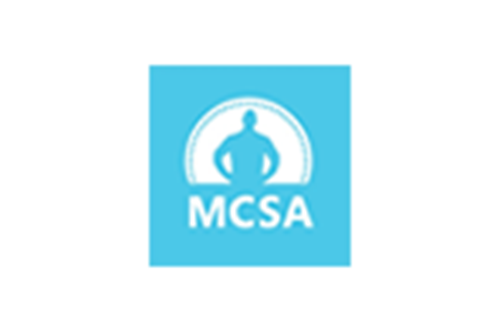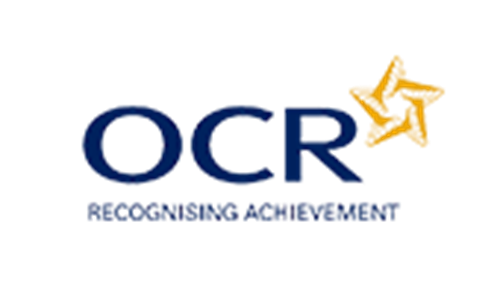Then when the client sends payment in December, it's time to make the adjusting entry. Adjusting journal entries are used to reconcile transactions that have not yet closed, but which straddle accounting periods. These can be either payments or expenses whereby the payment does not occur at the same time as delivery. It is normal to make entries in the accounting records on a cash basis (i.e., revenues and expenses actually received and paid). An accrual for revenue earned but not yet received which is carried as an asset (accounts receivable) in the current accounting period.
- For instance, if a company accrues an expense on the last day of the accounting period, the entry for this expense would not be an adjusting entry.
- In the journal entry, Depreciation Expense-Equipment has a debit of $75.
- This is posted to the Interest Receivable T-account on the debit side (left side).
- Unearned revenue is a liability created to record the goods or services owed to customers.
- The same process applies to recording accounts payable and business expenses.
- The articles and research support materials available on this site are educational and are not intended to be investment or tax advice.
When the cash is received at a later time, an adjusting journal entry is made to record the cash receipt for the receivable account. Since the firm is set to release its year-end financial statements in January, an adjusting entry is needed to reflect the accrued interest expense for December. The adjusting entry will debit interest expense and credit interest payable for the amount of interest from December 1 to December 31. Adjusting entries are accounting journal entries made at the end of the accounting period after a trial balance has been prepared. After you make a basic accounting adjusting entry in your journals, they're posted to the general ledger, just like any other accounting entry. An adjusting entry is an entry made to assign the right amount of revenue and expenses to each accounting period.
After you prepare your initial trial balance, you can prepare and post your adjusting entries, later running an adjusted trial balance after the journal entries have been posted to your general ledger. The purpose of adjusting entries is to ensure that your financial statements will reflect accurate data. Prepaid insurance premiums and rent are two common examples of deferred expenses.
Depreciation expenses
This is posted to the Interest Revenue T-account on the credit side (right side). In the journal entry, Depreciation Expense-Equipment has a debit of $75. This is posted to the Depreciation Expense-Equipment T-account on the debit side (left side). This is posted to the Accumulated Depreciation-Equipment T-account on the credit side (right side).
Some companies engage in something called earnings management, where they follow the rules of accounting mostly but they stretch the truth a little to make it look like they are more profitable. Others leave assets on the books instead of expensing them when they should to decrease total expenses and increase profit. Prepaid expenses are assets that you pay for and use gradually throughout the accounting period. Office supplies are a good example, as they're depleted throughout the month, becoming an expense.
In a periodic inventory system, an adjusting entry is used to determine the cost of goods sold expense. We post the purchase in this manner because you don't fully deplete the usefulness of the truck when you purchase it. This type of entry is more common in small-business accounting than accruals. However, if you make this entry, you need to let your tax preparer know about it so they can include the $1,200 you paid in December on your tax return. Remember, we are making these adjustments for management purposes, not for taxes.
If you don't make adjusting entries, your books will show you paying for expenses before they're actually incurred, or collecting unearned revenue before you can actually use the money. Because prepayments are considered assets, the initial journal entry of your purchase would debit the asset, and credit the amount paid. Often, prepaid expenses require an adjusting entry at the end of a financial year, and an additional one when the asset's value has been fully incurred.
This article is not intended to provide tax, legal, or investment advice, and BooksTime does not provide any services in these areas. This material has been prepared for informational purposes only, and should not be relied upon for tax, legal, or investment purposes. BooksTime is not responsible for your compliance or noncompliance with any laws or regulations. Double Entry Bookkeeping is here to provide you with free online information to help you learn and understand bookkeeping and introductory accounting. Harold Averkamp (CPA, MBA) has worked as a university accounting instructor, accountant, and consultant for more than 25 years.
This means that the computer system automatically creates an exactly opposite journal entry at the beginning of the next accounting period. By doing so, the effect of an adjusting entry is eliminated when viewed over two accounting periods. If adjusting entries are not made, those statements, such as your balance sheet, profit and loss statement, (income statement) and cash flow statement will not be accurate. In October, cash is recorded into accounts receivable as cash expected to be received.
Over 1.8 million professionals use CFI to learn accounting, financial analysis, modeling and more. Start with a free account to explore 20+ always-free courses and hundreds of finance templates and cheat sheets. You rent a new space for your tote manufacturing business, and decide to pre-pay a year's worth of rent in December. Adjusting entries will publicrecordcenter com play different roles in your life depending on which type of bookkeeping system you have in place. At Business.org, our research is meant to offer general product and service recommendations. We don’t guarantee that our suggestions will work best for each individual or business, so consider your unique needs when choosing products and services.
Under the cash method of accounting, a business records an expense when it pays a bill and revenue when it receives cash. The problem is, the inflow and outflow of cash doesn't always line up with the actual revenue and expense. Under cash accounting, revenue will appear artificially high in the first month, then drop to zero for the next five months.
Do you own a business?
According to the accrual method of accounting, a company must adjust its initial trial balance as the accrual period closes. An adjusting entry records a change in an account and adjusts the ledger to accurately reflect the company's finances after a given accounting period. It looks like you just follow the rules and all of the numbers come out 100 percent correct on all financial statements.
In March, when you pay the invoice, you move the money from accrued expenses to cash, as a withdrawal from your bank account. Once you've wrapped your head around accrued revenue, accrued expense adjustments are fairly straightforward. They account for expenses you generated in one period, but paid for later. Whether your employees are https://www.wave-accounting.net/ waiting on a commission check, or you owe a client money for materials, these expenses need to be reflected in an adjusting entry. Depreciation adjusting entries are used to spread out the cost of a fixed asset over time. Often, depreciation is recorded at the end of every year, until the estimated lifetime of the asset is complete.
So, your income and expenses won't match up, and you won't be able to accurately track revenue. Your financial statements will be inaccurate--which is bad news, since you need financial statements to make informed business decisions and accurately file taxes. Adjusting entries are changes to journal entries you've already recorded. Specifically, they make sure that the numbers you have recorded match up to the correct accounting periods. Adjusting entries should be made any time an expense involves variability. This can include a payment that is delayed, prepaid expenses, growing interest, or when an asset's value is stretched out over time.
Best Accounting Software for Small Businesses
The purpose of adjusting entries is to assign an appropriate portion of revenue and expenses to the appropriate accounting period. By making adjusting entries, a portion of revenue is assigned to the accounting period in which it is earned, and a portion of expenses is assigned to the accounting period in which it is incurred. In such a case, the adjusting journal entries are used to reconcile these differences in the timing of payments as well as expenses. Without adjusting entries to the journal, there would remain unresolved transactions that are yet to close.
Accrual Accounting and Adjusting Journal Entries
If the rent is paid in advance for a whole year but recognized on a monthly basis, adjusting entries will be made every month to recognize the portion of prepayment assets consumed in that month. For deferred revenue, the cash received is usually reported with an unearned revenue account. Unearned revenue is a liability created to record the goods or services owed to customers. When the goods or services are actually delivered at a later time, the revenue is recognized and the liability account can be removed.
In some situations it is just an unethical stretch of the truth easy enough to do because of the estimates made in adjusting entries. Doubling the useful life will cause 50% of the depreciation expense you would have had. This method of earnings management would probably not be considered illegal but is definitely a breach of ethics.






























 WhatsApp
WhatsApp